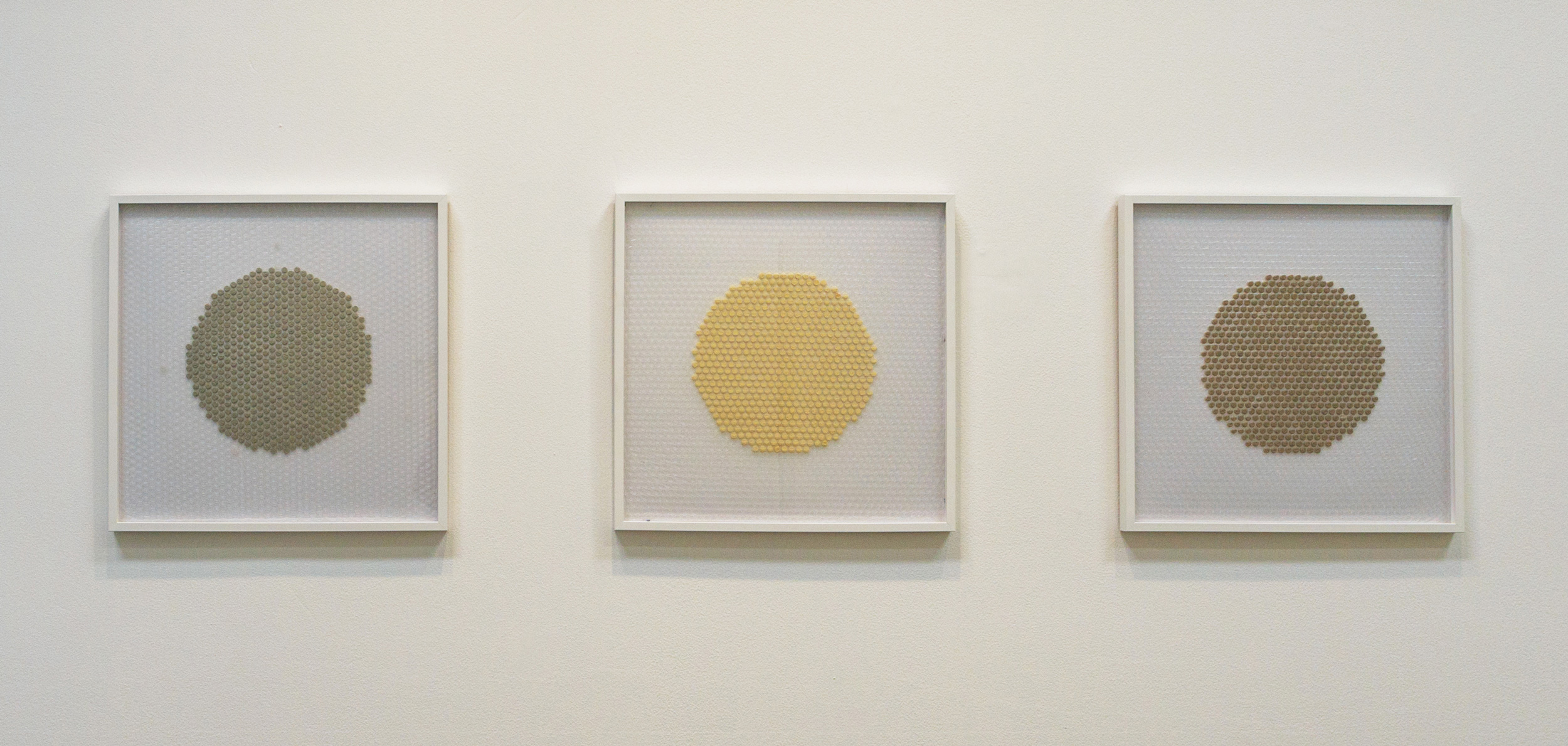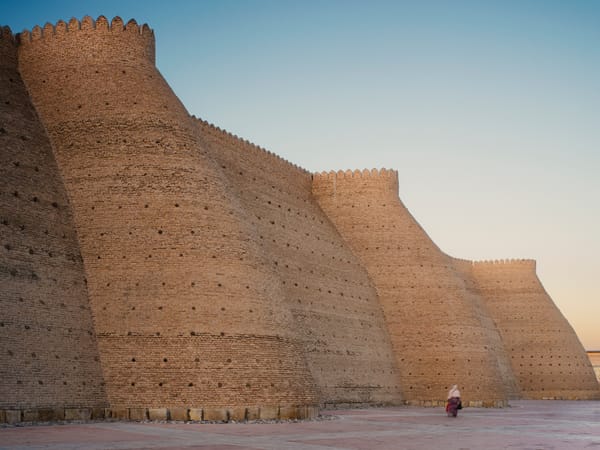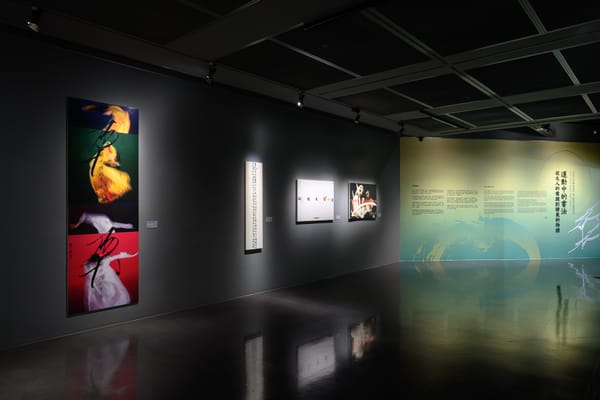Shows
Nadia Kaabi-Linke’s “Farenheit311: Seven Legends of Machismo”


Berlin- and Tunis-based artist Nadia Kaabi-Linke’s second solo exhibition at Dubai's Lawrie Shabibi gallery presents her exploration of modern “macho culture,” through eight context-specific works that draw associations to the seven deadly sins. Taking its title from the scientific melting point of testosterone, “Farenheit311: Seven Legends of Machismo” examines characteristics of masculinity and how these traits emerge through themes of heroism and war, as well as exploitation and violence.
Reminiscent of a religious triptych found in early Christian art or classical European churches, The Altarpiece (2015) is the central work of the exhibition. Its three panels, enclosed in a gold-leaf-coated frame, display ink and wax prints depicting the bullet-ridden exterior of a bunker in Berlin, which was built during World War II by forced civilian labor. The actual building, after being repurposed several times since then, currently holds artworks from the private Boros Collection.
The notion of masculinity manifests itself in The Altarpiece through the visual representation of war: the bullet holes on the bunker wall symbolize the wounds and dark revelations of Germany’s modern history—now exposed for all to see. On the other hand, the panels form a gold-leafed square when folded shut, portraying an exterior image of wealth and stability. In its closed state, The Altarpiece becomes an allegory for the political strategy of covering up the past for a more favorable present.

Nearby are two other highly thought-provoking works that also examine the mythos of machismo. Twenty small frames featuring delicate, smudged markings take up the center wall. Entitled Impunities London Originals (2012), it is an emotionally raw piece, in which the fragile markings made from black powder on paper are, in fact, documentations of domestic violence. Between 2011 and 2012, Kaabi-Linke encountered many female victims of domestic abuse during her six-month residency at London’s Delfina Foundation, which motivated her to produce this work, drawing attention to the often covered-up issues surrounding the abuse of women inflicted by their significant others.
Installed on the opposite wall are four type cases holding a total of 400 glass flacons—small bottles used to sell kohl—containing soil samples from 400 US military graves in Tunisia. Each flacon is labeled with a number identifying the soldier whose grave the sample came from. Tunisian Americans (2012) incites reflection surrounding the consequences of war, power and acts of elitism. The US soldiers, who fought in the Tunisia Campaign (1942–43), continue to occupy foreign ground even in death, which Kaabi-Linke notes is drastically different from the African belief of fighting on native land in times of battle.
In the second, smaller room, Grindballs, Hardballs and Bangballs (all 2015) and A Short History of Salt and Sun (2013) delve into different notions of masculinity. Three individual but related works place sand, cement and lycopodium pollen into circles of bubble wrap. Set in frames, the content of the works are sealed and protected from outside forces. The installation expresses the manipulative capabilities of man to exploit and destruct their environment. In contrast, A Short Story of Salt and Sun (2013) is an ink-and-wax painting that exposes the ultimate failure of man to control Mother Nature. The image is a print taken from a salt-eroded wall of a seaside resort in Tunisia and depicts the unstoppable decay of physical man-made structures while also commenting on the failure of mass tourism in Tunisia.

The exhibition is entrenched in historical contexts and masculinity—in the form of war, heroism, violence and destruction—which are rife in Kaabi-Linke’s confounding works. Her metaphorical “melting” of masculinity forces viewers to reflect upon characteristics of machismo occurring in our modern society and criticize the effects and consequential outcomes of such behaviors.
“Farenheit311: Seven Legends of Machismo by Nadia Kaabi-Linke” is on view at Lawrie Shabibi gallery, Dubai, until May 19, 2015.







